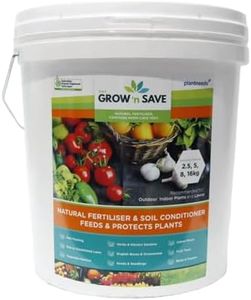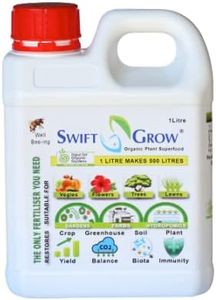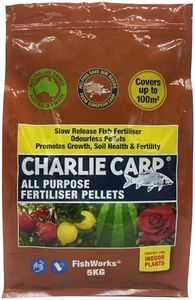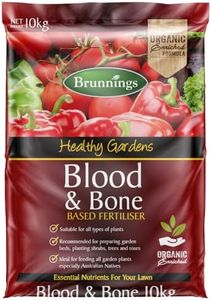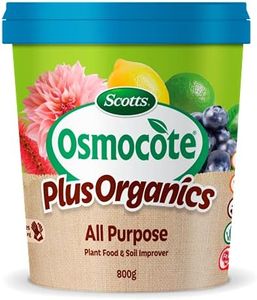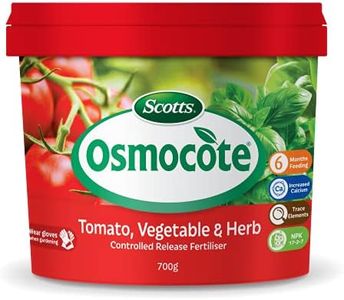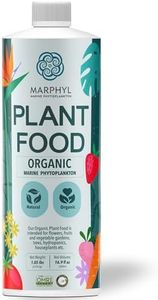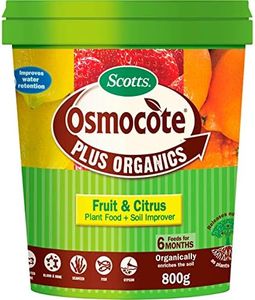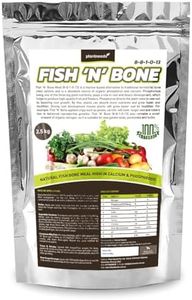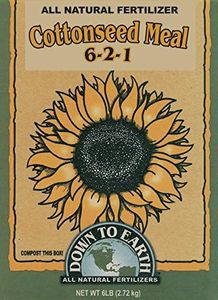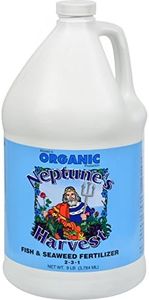We Use CookiesWe use cookies to enhance the security, performance,
functionality and for analytical and promotional activities. By continuing to browse this site you
are agreeing to our privacy policy
10 Best Organic Fertilizers
From leading brands and best sellers available on the web.Buying Guide for the Best Organic Fertilizers
Choosing the right organic fertilizer is all about meeting the nutrient needs of your particular plants and promoting healthy, sustainable growth. Organic fertilizers are derived from natural sources and offer a gentle way to enrich your soil, but not all options are the same. Matching the fertilizer’s makeup to your soil type, plant variety, and growth goals is the best path to success. Understanding the key characteristics will help make sure you choose a product that benefits your garden without causing harm to the environment.N-P-K RatioThe N-P-K ratio stands for Nitrogen (N), Phosphorus (P), and Potassium (K)—the primary nutrients plants need. This ratio is usually listed as three numbers, like 5-3-2. Nitrogen helps leaves and stems grow, phosphorus aids roots and flowers, and potassium supports overall health and disease resistance. High-nitrogen fertilizers are good for leafy vegetables, balanced types suit most gardens, and higher phosphorus is great for root or flower development. To pick the right one, consider what you’re trying to grow: leafy plants like lettuce need more nitrogen, while tomatoes or flowering plants benefit from extra phosphorus and potassium.
Release SpeedRelease speed describes how quickly nutrients become available to plants after you apply the fertilizer. Slow-release options break down over weeks or even months—great for steady feeding and less frequent application. Fast-release types, like compost tea or fish emulsion, give plants nutrients quickly, helpful for a fast boost but needing more regular application. Pick slow-release for general garden feeding or if you want less frequent maintenance, and fast-release if you see signs of deficiency and need a quick fix.
Source MaterialOrganic fertilizers come from different natural origins, such as animal manure, plant materials, bone meal, blood meal, or seaweed. Some are plant-based (like cottonseed meal or alfalfa), while others are animal-based. Plant-based sources are typically lighter and slower to release nutrients, making them safe for most plants. Animal sources tend to be richer, provide quick nutrients, and are better for heavy feeders. Consider your garden’s needs and any ethical preferences you have. For edible gardens, make sure the source is safe and well-composted.
Form (Liquid vs. Granular)Organic fertilizers come in liquid, granular, or sometimes powdered forms. Liquids are fast-acting and ideal for a quick boost, often used for containers and needy plants. Granular types are sprinkled or mixed into soil, breaking down gradually for long-term feeding; these work well for garden beds and lawns. Powdered forms can be dissolved or sprinkled. Choose liquid when you want immediate results or are fertilizing potted plants, and go with granular or powdered for ongoing soil enrichment.
Micronutrient ContentBesides N-P-K, plants benefit from smaller amounts of micronutrients like calcium, magnesium, iron, and zinc. Not all organic fertilizers have these extra nutrients, but if your plants show yellowing leaves or poor growth, it could help to pick one that lists these on the label. Choose regular fertilizers for healthy-looking plants, but if you're growing fruits or vegetables in depleted soil or raised beds, look for comprehensive mixes including micronutrients.
Certifications and AdditivesCertifications, like organic or OMRI (Organic Materials Review Institute) listings, assure the product is truly organic and free from harmful additives. Some fertilizers may also include beneficial microbes or mycorrhizae to improve soil health. If you want to make sure you’re using a fully natural product or gardening organically, check for these certifications and any mention of extra ingredients. Go for certified products if you’re growing food or care about strict organic standards.

